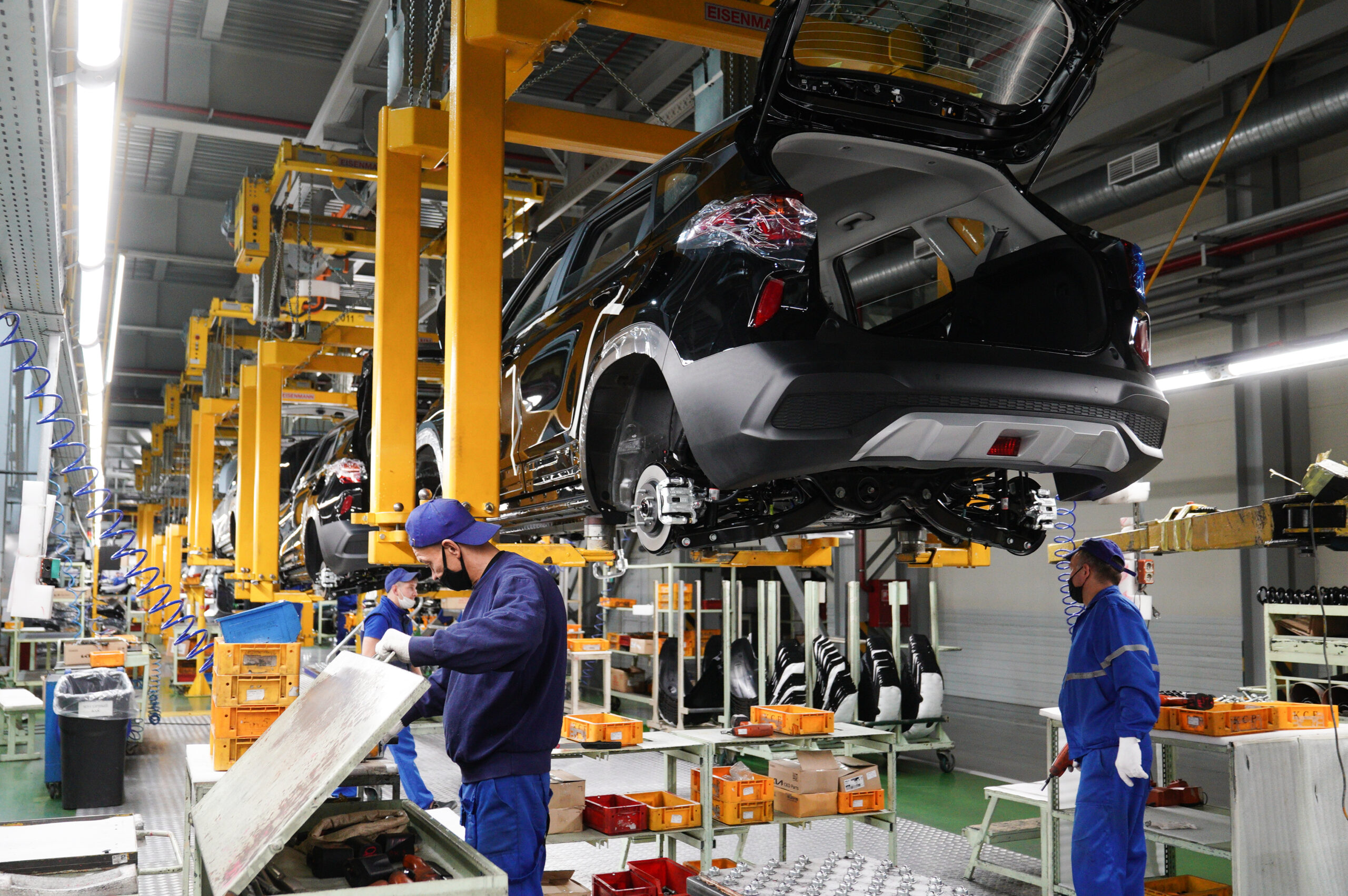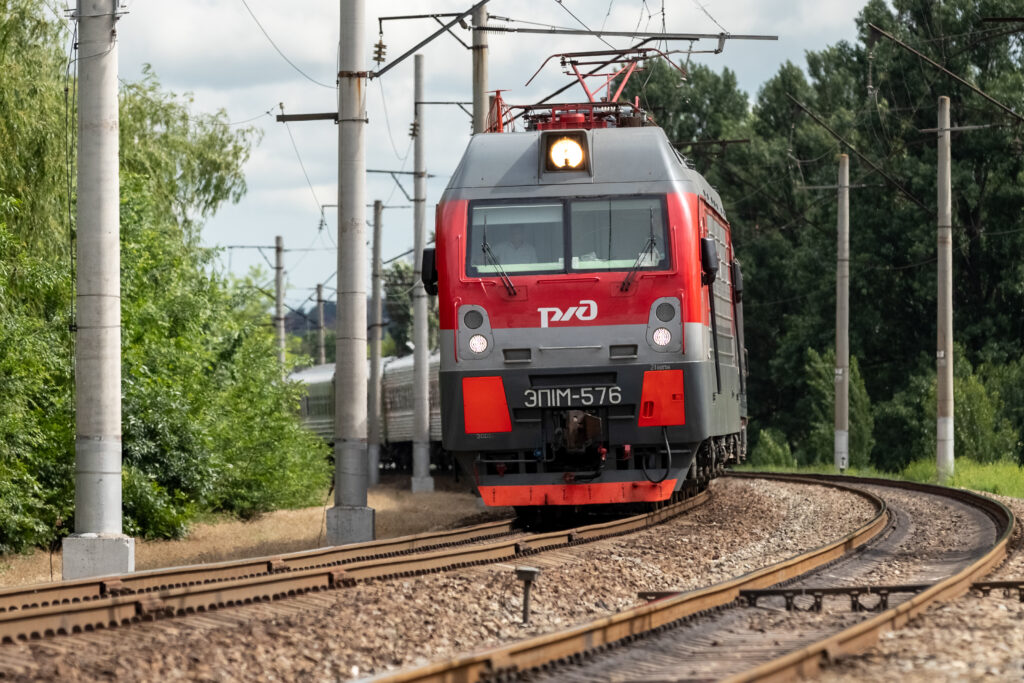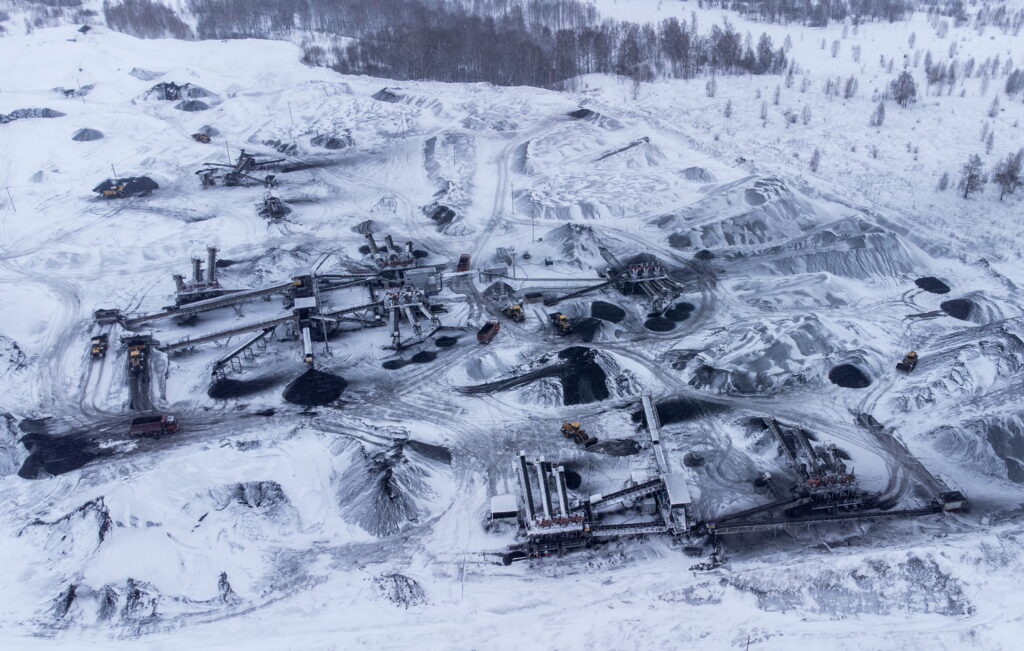In May 2018 the Russian government approved its strategy for the development of the Russian automotive industry until 2025. This set tricky targets for the industry. One goal was to produce 2.21 million passenger cars per year (up from 1.34 million in 2017). Another was for exports to reach 269,000 cars (versus 83.4 thousand in 2017). Meanwhile the authorities wanted the share of electric vehicles to reach 5% by 2025 (against 0.006% in 2017). The hope was even for 80−90 percent of domestic demand to be met by Russian automakers.
At that juncture, Russia’s 2025 plans in some ways sought to keep pace with global trends; the hope was to develop the production of hydrogen or electric cars in Russia, and promote the rollout of autonomous vehicles.
Today, five years since the adoption of the strategy and more than a year since the start of full-scale war in Ukraine, it’s time to compare government plans with the prevailing reality and outline prospects.
Industrial Policy
The Russian government has traditionally taken an active part in the development of the automotive industry, allocating billions of rubles in subsidies and support. Its policies have long sought to localise car production and replace; there have also been generous schemes to directly finance their purchase by Russian consumers. Back in 2005, an industrial assembly regime was introduced in Russia, which provided customs benefits for the import of auto components in exchange for building factories in the country and increasing the localization of production. In addition to preferential duties, industrial assembly opened up access to various subsidies, tax preferences, government tenders and other support measures. Many of the world’s leading automakers took advantage of these opportunities and committed themselves to increasing the level of localization and investing in the development of production capacities in Russia. As a result, from 2011 to 2021, the share of imported cars in the Russian market decreased fourfold, domestic production of cars increased, world-class car factories appeared, investments in the production of auto components increased, and large automotive clusters formed in different parts of the country. The largest Russian automakers have entered into production alliances with global automotive companies: AvtoVAZ with Renault, Nissan and General Motors; GAZ Group with Volkswagen, Skoda and Mercedes-Benz; KAMAZ with Daimler Trucks; Sollers with Ford and Mazda; Avtotor with BMW, KIA, Hyundai and General Motors. Some foreign corporations (Toyota, Peugeot, Mitsubishi, Opel, Citroen, Volvo Trucks, Isuzu, etc.) developed production in Russia on their own. All these companies participated in the industrial assembly, and not a single Chinese automaker was among them, which the Russian government has traditionally treated with little to no interest and did not allow them to benefit from state support measures.
With the end of the industrial assembly regime in 2018 and the transition of the industry to a new, more stringent mechanism of special investment contracts, most of the «industrial assembly» car corporations assumed new investment obligations and retained access to subsidies, benefits and preferences, and only one Chinese company — Haval — joined the club of «our own» foreign automakers, becoming an integral part of the Russian automotive industry after the construction of a complete plant cycle in the Tula region in 2019 and investments of billions of dollars and tough negotiations with the Ministry of Industry and Trade of Russia,.
A turning point inevitably came in February 2022: after the start of full-scale war in Ukraine, many global automakers and related suppliers of auto components and spare parts began to suspend business in Russia; many later completely left the Russian market, causing the largest ever crash since the collapse of USSR. In fact, this paralyzed the work of not only its factories, but also many related enterprises. According to the noted Strategy-2025, it was expected that in 2022 1.83 million cars would be produced in Russia, but only 450 thousand were produced, and the volume of the Russian market of new cars fell by 58.8% year on year and by 64.6% compared to the 2025 strategy.
The «Great exodus» of global automakers
In Russia, almost all global auto corporations from so-called «unfriendly» countries have now suspended their business; this «exodus» affected all major automotive production clusters: St. Petersburg (Nissan, KIA, Hyundai, MAN, Scania), Moscow (Renault, Nissan, Mercedes), Kaluga (VW, Peugeot, Citroen, Mitsubishi, Volvo Trucks), Nizhny Novgorod (VW, Skoda), Kaliningrad (BMW, KIA, Hyundai), Samara (Renault, Nissan), Tatarstan (Ford, Daimler Trucks), Ulyanovsk (Isuzu), Primorye (Mazda). Right after, Russian car factories of foreign companies faced a shortage of components, with imports prohibited or limited by sanctions; the largest national auto corporations (KAMAZ, GAZ Group, UAZ, Automobile Plant URAL), being already burdened with all kinds of sanctions, found themselves on the brink of collapse. Everyone still standing had to reconfigure the entire value chain (from suppliers of raw materials, assemblies and components to car factories, dealer and service stations) and look for various ways to retain staff, production capacities, and trade and distribution infrastructure.
The disappearance of international auto corporations came as a surprise to the Russian authorities, as evidenced by attempts to reconfigure industrial policy on the go: at first, head of the Russian Ministry of Industry and Trade was sure that «the companies that had suspended work in Russia were interested in returning.» If necessary, they will be assisted by government. Then, figuring out that no one is in a hurry to return, Russian officials proposed other ways to «save» the Russian auto industry. At the first stage: buy out all business assets of auto corporates for a nominal fee (which was done in the cases of Renault, Nissan, Toyota) or to allow Russian companies (usually large dealers or automakers) to acquire them on favorable terms (deals made: Mercedes — Avtodom; Daimler Trucks — KAMAZ; Mazda — Sollers; Volkswagen — Avilon, etc.). The second stage was to select partner automakers from «friendly» countries that will help resume production, save jobs and key competencies.
Subsequently, practice has shown that in all cases when it comes to attracting partners from «friendly» countries, they turn out to be Chinese automakers who discover new business opportunities in Russia, not only in terms of increasing exports, but also utilizing first-class vacant production sites and dealerships. The most famous example is the transfer of 100% of the shares of the Moscow plant, owned by Renault, to the Moscow government under the «deal for 1 ruble» scheme. And soon, at the vacated capacities, mass production of cars of the Chinese automaker JAC under the Moskvich brand was launched. Other examples are the reorientation of Avtotor’s capacities, released after the suspension of production of BMW, Kia and Hyundai in Kaliningrad, to the production of Chinese cars Kaiyi, BAIC and DongFeng, or the launch of production of commercial vehicles by the Russian company Sollers under its own brand based on Chinese JAC models at its plant in Yelabuga instead of the Ford Transit vans produced there earlier. Next in line is the opening of the production of Chinese Chery cars at the former Volkswagen plant in Kaluga, which already belongs to the Russian car dealer Avilon.
Chineseization of the automotive industry and its costs
With the departure of global automakers in Russia, there is an impressive acceleration in sales of Chinese cars. If earlier in different years in total all «Chinese» occupied from 2% to 7% of the market share of passenger cars and light commercial vehicles, then by the end of 2022 their share increased to 20%, and it is expected that in 2023 this figure may reach 60% and higher. Similar trends are observed in the Russian truck market: if from year to year the share of Chinese trucks remained at the level of 2−6%, then in 2022 they occupied about 30% of the market share, and in the first quarter of 2023 they already exceeded 50%.
The Russian authorities are unable to resist the process of comprehensive Chineseization of the Russian automotive industry in the face of confrontation with Western business and sanctions restrictions in place against national automakers. Moreover, the Chineseization of the industry not only undermines the fundamental principles of Russia’s industrial policy; it also creates a threat to the future of Russian automakers, in whose favor the government has always been able to build and regulate the rules of the game in the industry. Today, however, any interventions aimed at protecting the domestic market and «domestic producers» will primarily be directed against Chinese players, which is very risky from a political point of view. This is evidenced by the repeated rejection by the Russian government of attempts by Russian automakers to increase the recycling fee for «Chinese brands that we do not understand» as the head of AvtoVAZ noted. Besides, it is no secret that today the bulk of cars, components and spare parts for parallel imports are imported through China, and any discriminatory actions against Chinese automakers create the risk of obstructing these deliveries by the PRC authorities with all the ensuing consequences for the Russian economy. Therefore, today Russian automakers are much less protected from Chinese competitive pressure than from competition from global automakers until February 2022.
Over the past 20 years, the Russian government has pursued a policy in the auto industry aimed at deep localization of cars and import substitution, a combination of stimulus and protectionist measures and, in an open economy, had «room for maneuver» in negotiations with global automakers and could choose between competing brands. Until February 2022, the Russian automotive industry was a competitive industry with all the prospects for full integration into the global automotive industry. Today, there is no one to negotiate with except the «Chinese», and in order to achieve similar effects with Chinese automakers, the government will need years of meticulous work, the success of which is not at all obvious even if we proceed from peacetime conditions and the absence of sanctions.
Meanwhile, already today one can discern new attributes of the industry that predetermine the prospects for the Russian automotive industry for the coming decades:
1) Chinese automakers are becoming only partners of Russian companies, not owners of the assets of outgoing automakers. Therefore, the concern for investing in the development of production falls entirely on the shoulders of Russian contractors and the state, while the Chinese side has the right to suspend the partnership without any significant losses for itself. It is no coincidence that almost all the production of Chinese cars that has been established at the moment is carried out using the SKD or «screwdriver» assembly technology. And the expected increase in the investment hunger of car factories will lead to the automakers getting used to simple assembly operations and Russia’s unwillingness to force Chinese automakers to carry out deep localization of their models.
2) Due to the growing competitive pressure on Russian automakers, disagreements have already emerged in the industry regarding the provision of state support measures for poorly localized products, even despite the extremely low production of Chinese cars in the country. At the Moscow plant, for example, in the first two months of this year, 86 Moskvich cars were assembled (moreover, in the days of Renault, the same number of cars were produced here in just three hours). At the same time, the policy of protecting domestic manufacturers can harm the already very risky partnership with Russian automakers for Chinese automakers (due to possible secondary sanctions), so conflicts will only escalate.
3) Existing sanctions risks and geopolitical uncertainty make it impossible to develop a full-fledged production of vehicles in Russia, which requires uninterrupted logistics supplies of original components, technologies and spare parts from many regions of the world. Due to the cessation of deliveries to Russia of individual components and electronic control units, Kamaz was forced to return to the production of Euro-2 environmental class vehicles, which were produced in the country in the 1970s, and AvtoVAZ began to produce its models without automatic transmission gears. The government generally had to allow the country to produce cars without anti-lock braking systems (ABS), airbags and other safety and comfort elements. The current individual and sectoral sanctions, even with aid from China, are pushing the Russian automotive industry back decades.
4) «Reconfiguring» the capacities of global automakers to start production of Chinese models is a one-way street, since the changes will affect all production processes, automotive platforms, technological and information systems. These changes are becoming irreversible, destroying channels of communication with former parent companies and effectively making car factories «Chineseized» and therefore unattractive for departed global automakers in the event of their possible return in the future.
5) Today, the global automotive industry demonstrates a rapid pace of transition to a new technological basis, which is reflected in the huge investments of automakers in vehicle electrification technologies and the decarbonization of the entire chain — from the supply of materials and components to the production and sale of cars. The same Chinese companies, such as Geely, Great Wall, BYD, Lifan, and others, have already entered the global market through participation in mergers and acquisitions, are being integrated into the processes of transnationalization and decarbonization of production, and are gaining access to the latest developments and technologies. Back in 2019, there were already about 500 electric vehicle manufacturers in the PRC, and in 2022, the Chinese market for electric and hybrid vehicles amounted to 6.9 million units, or 60% of global sales. Under the conditions of sanctions and technological isolation, Russia will obviously not be able to claim a serious place in the market of innovative types of cars, remaining a peripheral country-market for vehicles with outdated types of power plants and «dirty» technologies.
***
The authorities are in no hurry to recognize new realities where the Russian automotive industry has found itself. On the contrary, the government of the Russian Federation recently approved the next version of the industry development strategy, but for the period up to 2035, which in its target scenario assumes «relatively high rates of achieving technological sovereignty by increasing, among other things, the volume of state financing of the automotive industry in terms of deepening the localization of production critical components.» The task of achieving the technological sovereignty of the national automotive industry is comparable in spirit to the task of building socialism in a single country, but in essence it means a forced course towards the archaization of the automotive industry, a decrease in its production and technological potential, the loss of key competencies and knowledge, as well as the prospects for integrating the industry into the global automotive industry.










